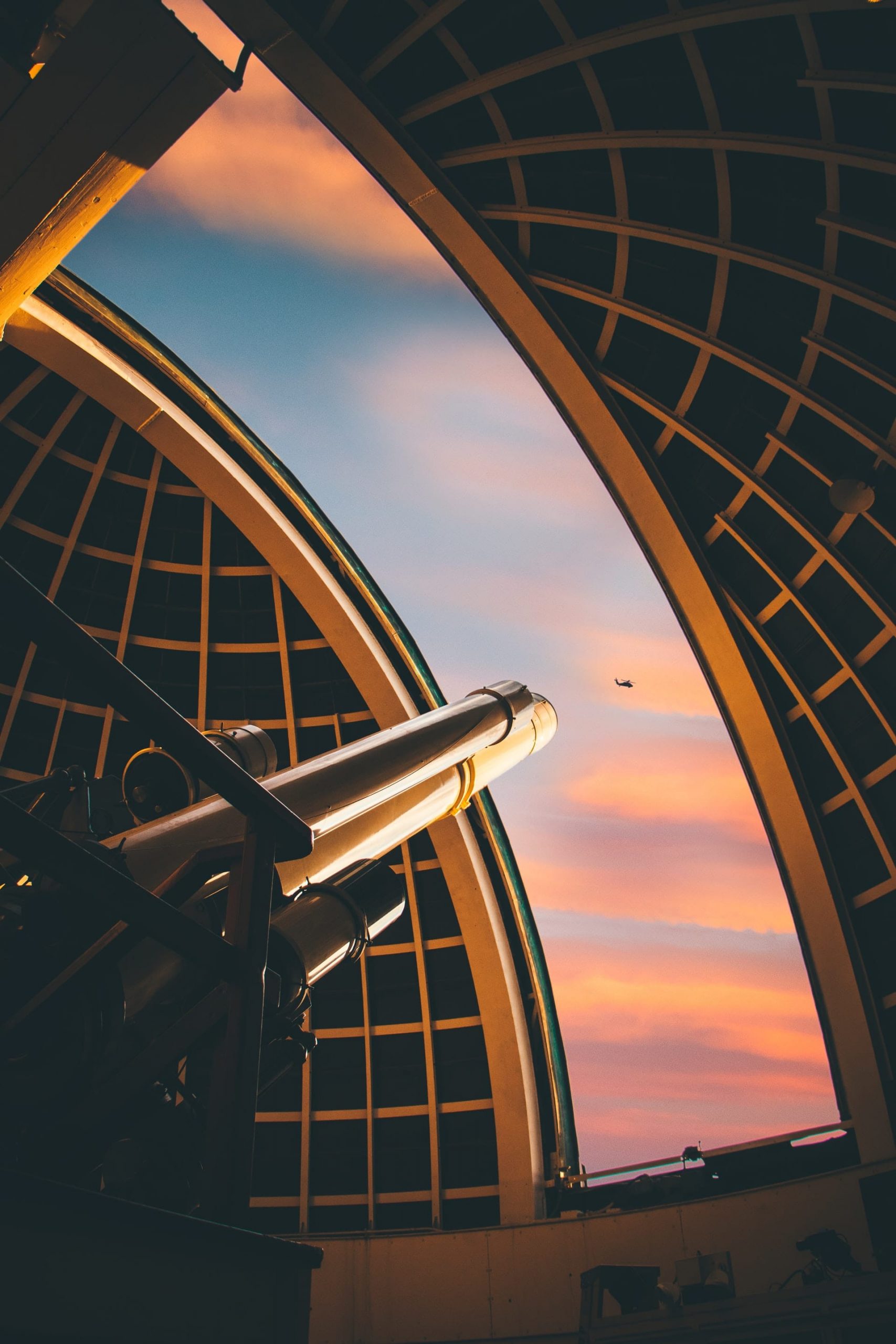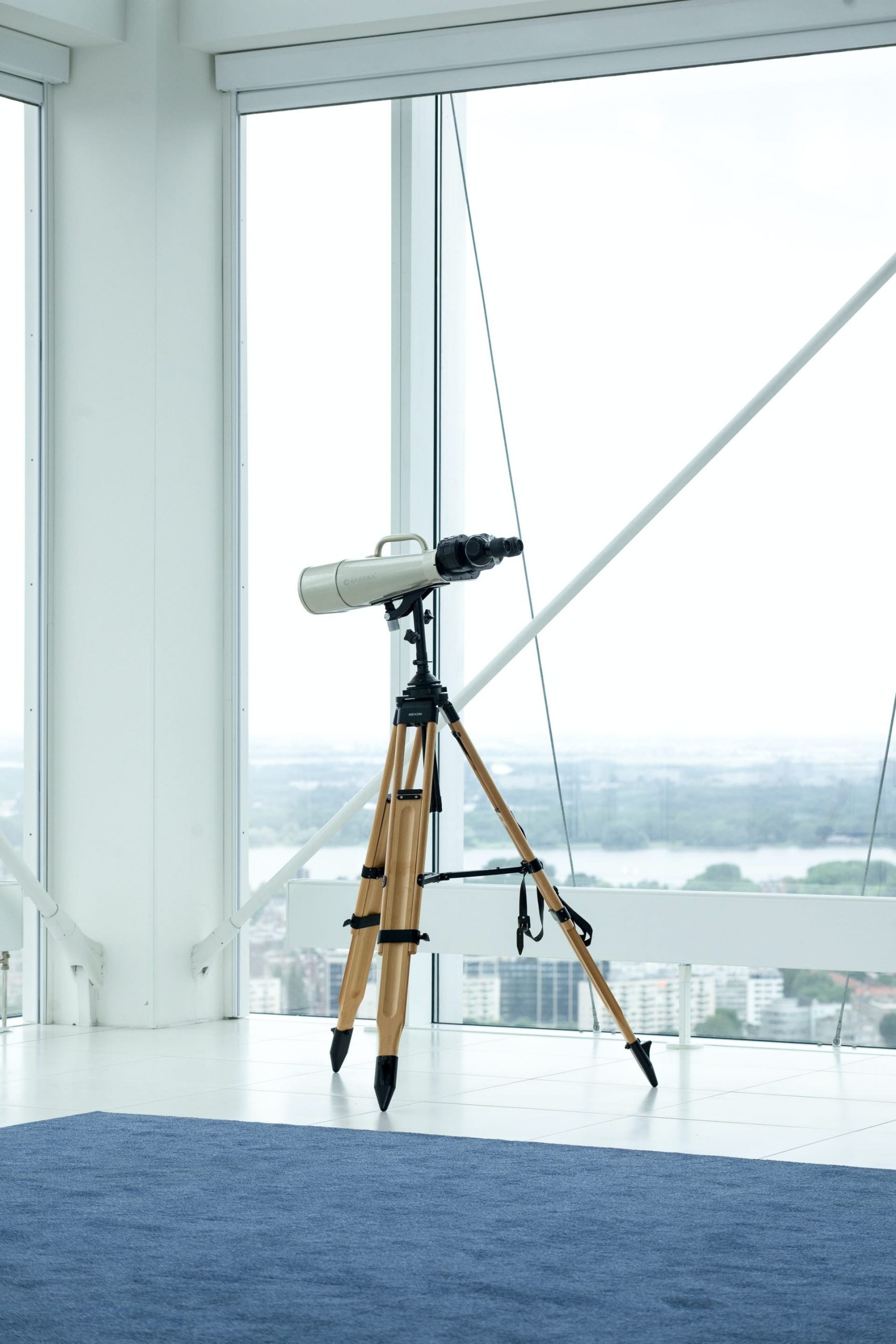
There are three basic types of telescopes refractors, reflectors, and catadioptrics. All three designs have the same purpose, to collect light and bring it to a point of focus so it can be magnified with an eyepiece for examination by the eye. Each does this work differently, though. And each has advantages, as well as disadvantages.
Overview of the Basic Types of Telescopes
Reflecting Telescopes
Pros:
Ideal for moon, planets, and stars
Good for distant terrestrial viewing
Require little or no maintenance
Classic telescope design
Cons:
Most expensive per inch of aperture
Cost/bulk factors limit maximum size
Less suited for faint, deep-sky objects
Refracting Telescopes
Pros:
Least expensive per inch of aperture
Large apertures for deep-sky viewing
Reasonably compact and portable
Delivers very bright images
Cons:
Not well suited for terrestrial viewing
Slight light loss due to mirror system
May need simple mirror alignment
Catadioptric Telescopes
Pros:
Easy to use, compact and portable
Excellent optics provide sharp images
Great for astrophotography
Best all-purpose telescope design
Cons:
Most expensive telescope type
Slight light loss due to mirror system
Somewhat unusual appearance
Refracting Telescopes
Refracting telescopes employ two lenses to collect, focus and magnify more light than is otherwise possible with just the naked eye. This is the alternative to the reflecting telescope, which uses a system of mirrors to do the same. Refracting telescopes are widely considered to be sturdier and require less maintenance than their mirrored counterparts.
A chief reason that refracting telescopes require such little upkeep is that the lenses are fixed in place more firmly, meaning there will be no minor adjustments to be made on a regular basis. Also, although the technology of refracting telescopes is much older, the process is much more refined and therefore more reliable.
While you will enjoy the benefits of reliability and low maintenance, the initial cost of refracting telescopes is usually higher. This is because they must be ground and positioned to very precise specifications.
Just about every company in optics makes a refracting telescope, but you should especially check out those produced by Celestron, Meade, Zhumell, Orion, and Bushnell. These are excellent consumer brands geared toward the mass market, but many of them also produce institutional quality telescopes for use in observatories.
If you’re just getting started out in astronomy, the refracting telescope is recommended for the reasons mentioned above. Even after you’re sure you want to invest more money in your new hobby, you can buy plenty of accessories such as photography equipment and tripods before you need to upgrade.
Examples
Omni XLT 150 R
Ambassador 80 AZ
NexStar 102 SLT
80 LCM
Reflecting Telescopes
The mirrors and other components in reflecting telescopes are considerably less expensive. Mirrors can be fine tuned for optics much more easily than lenses can be ground, resulting in less expensive telescopes. If cost is your primary concern, you’ll probably want to get a reflecting model.
However, they aren’t always the best for beginners, as reflecting telescopes will require a little more maintenance as compared to refracting telescopes. Mirrors require regular recoating, as often as once every few years. They also must be handled very carefully as compared to refracting telescopes. Finally, a reflecting telescope requires more collimation, or adjusting, of the optical components.
Reflecting telescopes do usually create a more faithful reproduction of the sky than refracting telescopes. Generally you won’t have as many problems with “aberration,” or the faint colours that surround some celestial bodies like Jupiter and the moon.
For anyone brand new to the practice of astronomy, convention says that the refractor is more practical choice. If you know for certain that you’ll be using your telescope and regularly practicing astronomy, though, you’ll probably want to get a reflecting telescope right off the bat. Reflecting telescopes are better for viewing very faint objects in deep space and are considered preferable for astrophotography.
You’ll find great selections of reflecting telescopes and all relevant variations of them from brands such as Celestron, Meade, Zhumell, and Bushnell. These brands are considered to be the best in consumer optical products ranging from binoculars to telescopes.
Examples
PowerSeeker 127 EQ
AstroMaster 114 EQ
AstroMaster 130 EQ
Sky Prodigy 130
NexStar 130 SLT
Catadioptric Telescopes
A catadioptric telescope is a hybrid of both reflector and refractor telescopes. The name is derived from its components; lenses on refractor telescopes are diotropics, curved mirrors are known as catoptrics.
The catadioptric design is advantageous because it offers greater error correction and a wider field of view. Because both lenses and mirrors are employed, the high manufacturing costs of grinding lenses can be mitigated.
Just like in reflecting telescopes, mirrors in catadioptric designs can correct spherical and chromatic aberrations created by lenses. Coma, another aberration that is typically a problem with reflecting telescopes, can be corrected with a good catadioptric design.
Of all the designs of catadioptric telescopes, the most popular are the Schmidt-Cassegrain and Maksutov-Cassegrain models. Each of these are popular for their comparative ease of use and mobility. Catadioptric telescopes allow all their optical components to be present in a single tube, creating a much more compact and portable telescope.
As mentioned, most catadioptric telescopes are of the Schmidt-Cassegrain or Maksutov-Cassegrain variety. Other variations include the Maksutov-Newtonian and Schmidt-Newtonian. The variations all have to do with the thickness of the corrector plate and the angle of reflection.
Because they are so popular with amateur astronomers and newcomers, all major optics firms produce a good selection of catadioptric telescopes. You’ll find great offerings from Celestron, Bushnell, Galileo, Zhumell, and Meade, among others.
Examples
NexStar 4 SE
NexStar 6 SE
NexStar 8SE
NexStar 127 SLT
CGE Pro 1400 SC
CGE Pro 1400 HD
CGEM 925 HD




